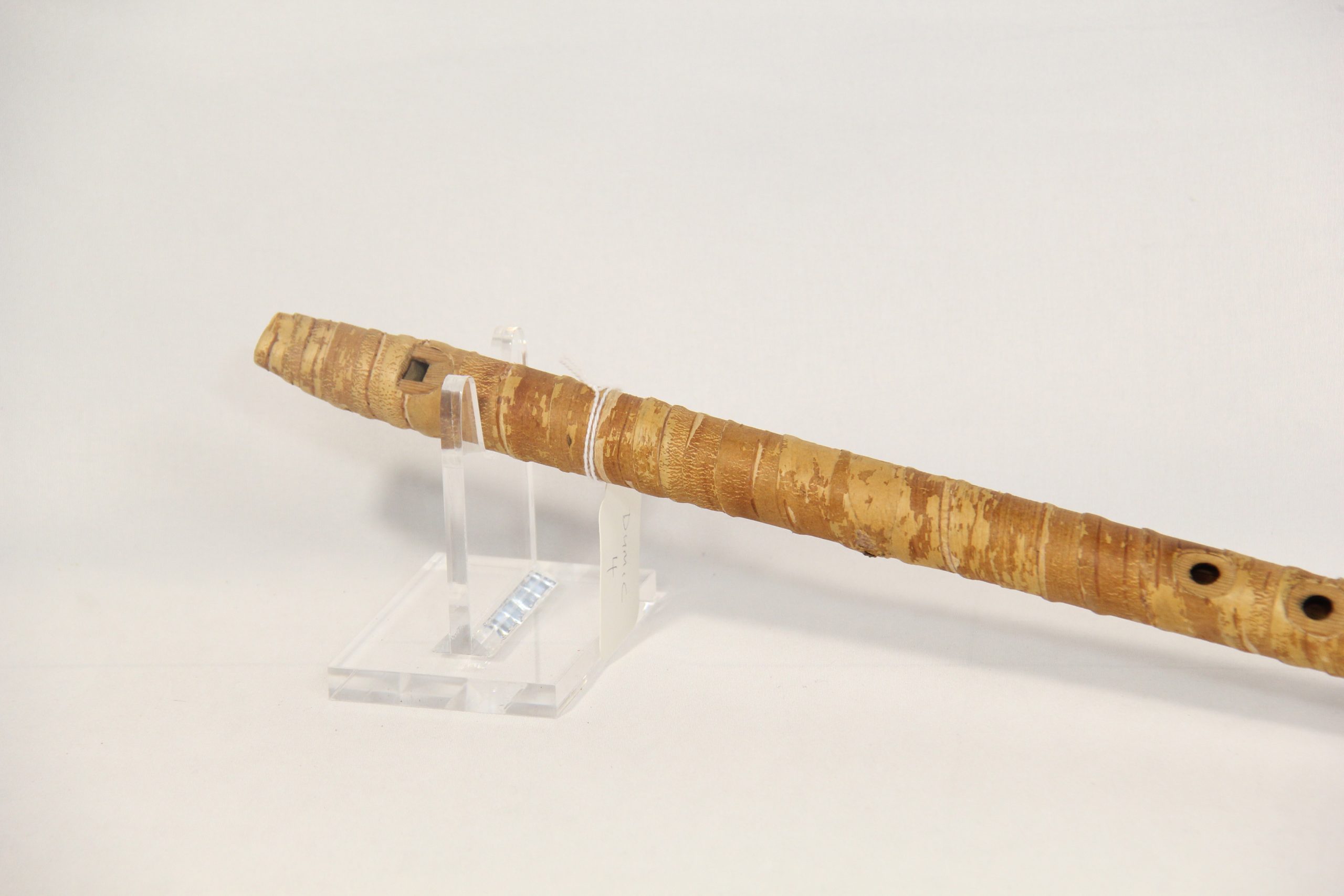Duct Flute
Details
- Origin: Finland
- Date Made: Post-17th century
- Collection: DUMIC 4
Description
Made of a single straightened pine branch (30-35 cm), bark is peeled off by heating, resin is evenly applied, finger holes (traditionally 4) and end holes are burnt into the wood. Duct flutes usually have flattened plugs of wood fitted into the end of the tube that is blown upon, but in the Finnish case that plug is replaced by the player’s tongue.
The uses originally intended for Finnish folk wind instruments were almost entirely practical. A duct flute such as this one was typically used by shepherds to play to their animals, as it was thought that the music would prevent beasts and demons from threatening their herds, as well as their livelihoods. However, it has been noted that shepherds often used the instruments for more personal, artistic purposes.
Finnish and Karelian flutes from this period resemble ancient, simple types of instruments, with finger holes not being added until after the 17th century. This particular flute is likely not too old, as the fresh wood used in its construction would not have survived otherwise.
Most of what is known about Finnish shepherd music as tied to this sort of duct flute is related to Teodor “Teppo” Repo (1886 – 1962), a famous Ingrian musician significant for being one of the last surviving herders playing and maintaining the tradition of shepherd music in the area. The style saw a brief resurgence in popularity in the 1970s, before falling back into relative obscurity. Today, though players and makers of these folk wind instruments are hard to come by, certain ensembles including the World Mänkeri Orchestra and the goat’s horn ensemble Pukinsarven Tröötöttäjät are implementing the instruments and promoting their continued use.
Sources
Djupsjöbacka, Tove. “Music for Cows and Wolves.” FMQ, May 9, 2018. https://fmq.fi/articles/music-for-cows-and-wolves.
- Emsheimer, Ernst. “A Finno-Ugric Flute Type?” Journal of the International Folk Music Council 18 (1966): 29–35. https://doi.org/10.2307/834638.





